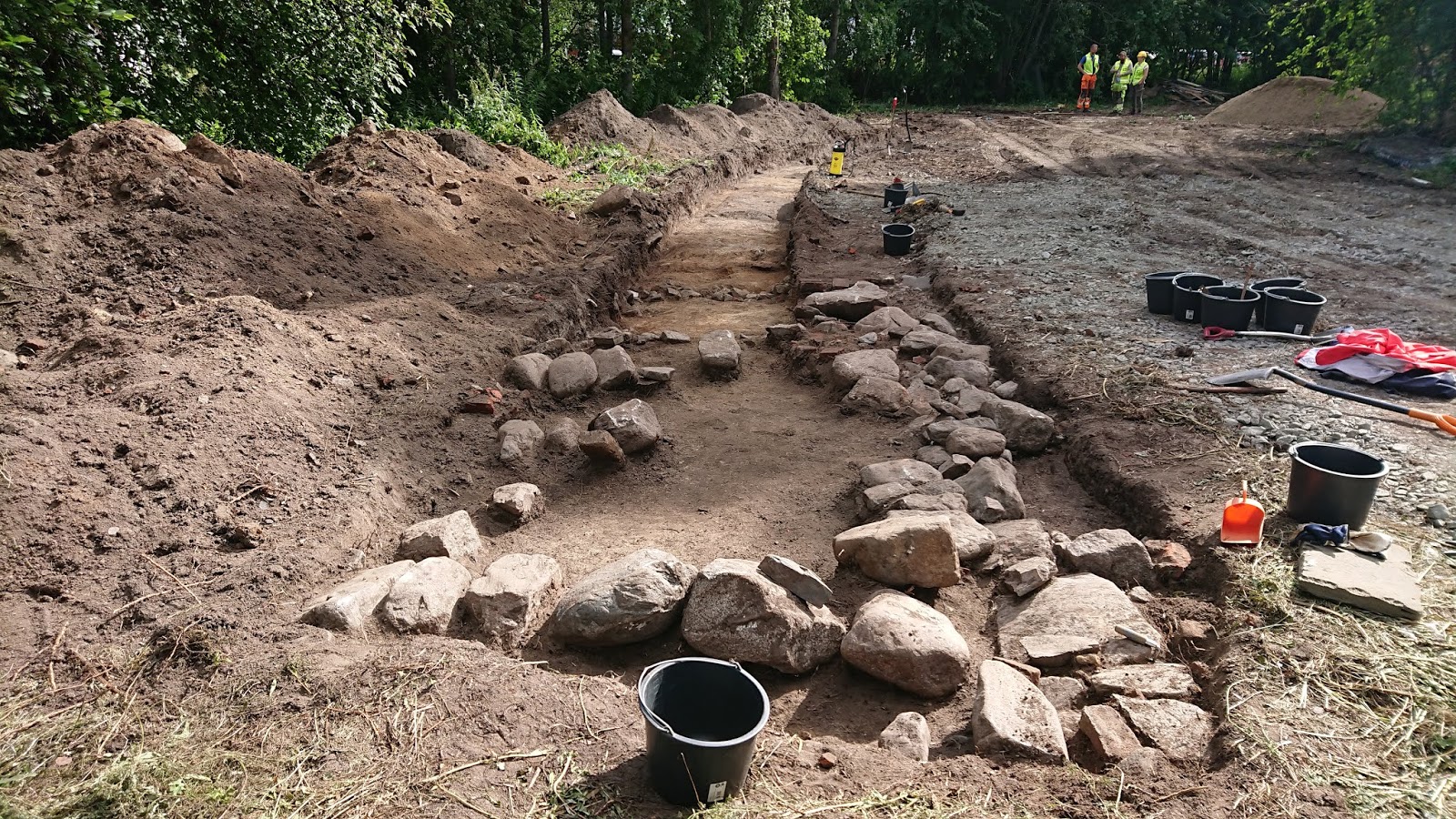Hidden Among the Planks
As mentioned before, a typical job for the trial excavation team is to conduct small-scale trial excavations in areas that have potential archaeological heritage but are falling under land use. Based on trial excavations, building projects can be halted until further research is conducted or, if possible, a potential area for the construction is found from an area that wouldn't disturb the archaeological heritage. This time our work sent us to further north and after hours of driving, we ended up in the city of Tornio right by the Swedish border.
In Tornio,
our mission was to dig test pits and trenches around an empty lot, that would soon
fall under further land use. As it’s typical to change the soil for the entire
lot when building residential buildings within cities, the whole lot had to be
checked for archaeological heritage. This time we couldn’t just find the most
suitable place for the building, but rather had to find out if further excavations
were needed and if so, to which part of the lot.
 |
| The first test trench that was opened. |
Our task
was assisted at the beginning by an excavator, which prepared larger test
trenches under our supervision. Although the first trench that we opened seemed at first
more likely to be archaeologically relevant, as it contained remains of an old stone
foundation, the finds within it suggested something far more recent. These
suspicions were further confirmed through a discovery of a coin from early 20th
century.
The second trench
on the other hand seemed more appalling at the beginning, as a part of it had
served as a recent trash dump and especially the corner of the trench revealed
a stink that made us leave it alone. However, as we dug deeper, more interesting
layers were discovered and ultimately we reached a wooden floor. Again, our
suspicions were confirmed through a coin - this time from the 17th century. At this point we knew that the site had to be properly excavated at a later
time. Thus, we had to leave the trench and the wooden planks for another time.
 |
| Test pit with multiple historical layers. |
Instead we
continued by opening small shovel test pits for one square-meter each. These small pits helped us to determine the extent of the archaeologically potential area and some pits even contained more remains of wooden floor that was again left for later. Finds from the trenches and test pits included mostly ceramics, bone, nails, pipe pieces and even some horseshoes. They will be further researched and dated at the next phase of our research, when we retreat back to the laboratories.
As the area contained so many features from the 17th century, it will be further excavated next year, when the crew will return to finish what they had started. I don't know whether I'll be there to join them, but in any case I will follow with great interest on what more was hidden among the planks!



Comments
Post a Comment